Armature – A rigid framework, often wood or steel, used to support a sculpture or large work while it is being made
In art, an armature is an underlying, unseen, supporting structure usually made of wood or metal. It is much easier to create a clay sculpture if you first construct a sturdy armature.
Armatures are used because wet clay cannot support itself in some positions. If the artwork is to be fired, the armature can be removed and the sculpture hollowed out when it is half-dry, and then put back together without the armature for firing. If the sculpture is to be cast, in bronze for example, a mould can be created of the clay with the armature intact, and then once the case is made from the mould, the armature points can be cut off.
To remember the meaning of armature, recall the following:
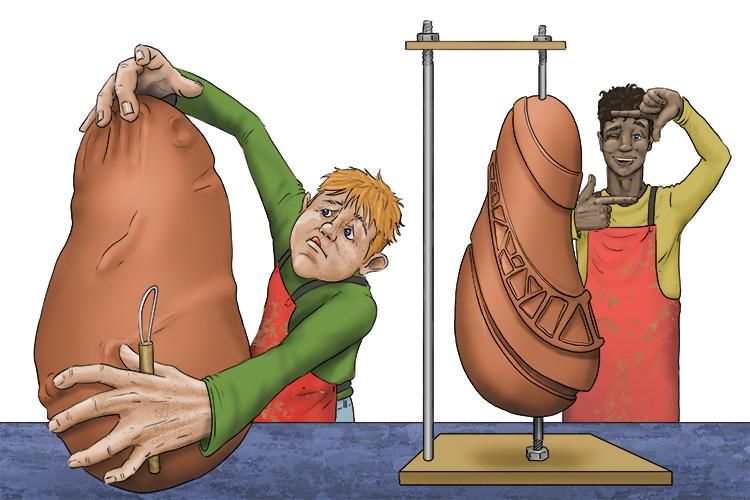
Instead of my arm, I'm going to use a structure (armature) to hold up the sculpture.
We are fortunate to be able to use modern technology to reveal how even the greats have used armatures to create their sculptures.
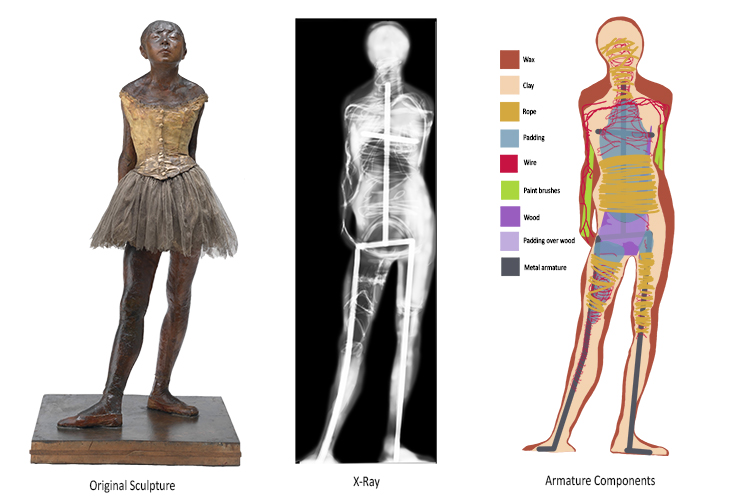
Here you can see, with the help of x-ray photography, that Edgar Degas used multiple materials to build an armature. The image revealed he used a rope, padding, wire, paintbrushes, wood and a metal armature to support his wax sculpture Little Dancer Aged Fourteen.
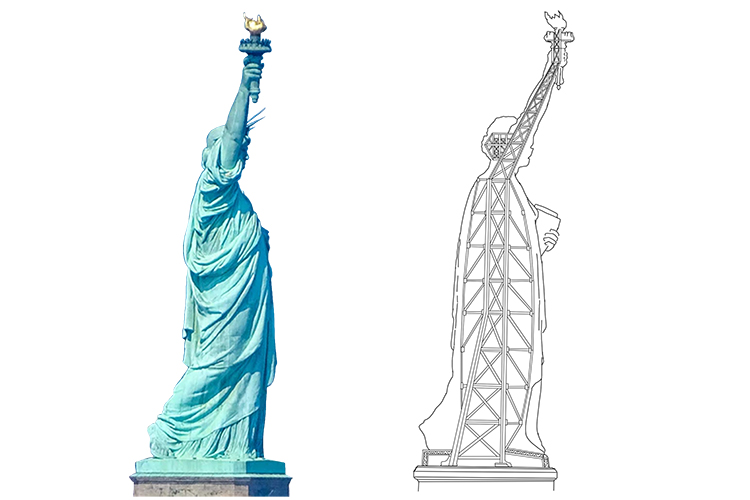
The Statue of Liberty in New York, USA, has a massive iron armature weighing over a quarter of a million tonnes.
If you are creating a sculpture around 300mm high (1ft), you can easily make an armature using aluminium gauge wire 3mm (⅛ inch) thick. Here are the steps to creating one for a sculpture of a horse:
To begin, you will need a wooden baseboard around 300mm thick, your 3mm gauge wire, a threaded bar 10mm thick and around 300mm long, and four nuts.

Drill a 10mm hole in the centre of your baseboard to insert the threaded rod. From the underside, drill a wider hole in the same place halfway through the board, this will allow the nut to sit flush with the base. Thread another nut above the base to hold the rod in place.
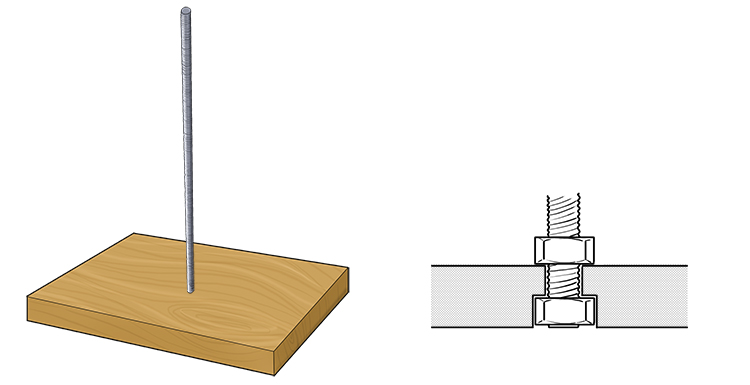
To create the horse armature, we need three lengths of wire; two for the legs and one for the nose-to-tail length. Cut all three of these lengths around 600mm long.
Bend two of the wires to create a back leg, a front leg and a middle section with each. Bend the third wire to create the head and neck of the horse, the body, and the tail.
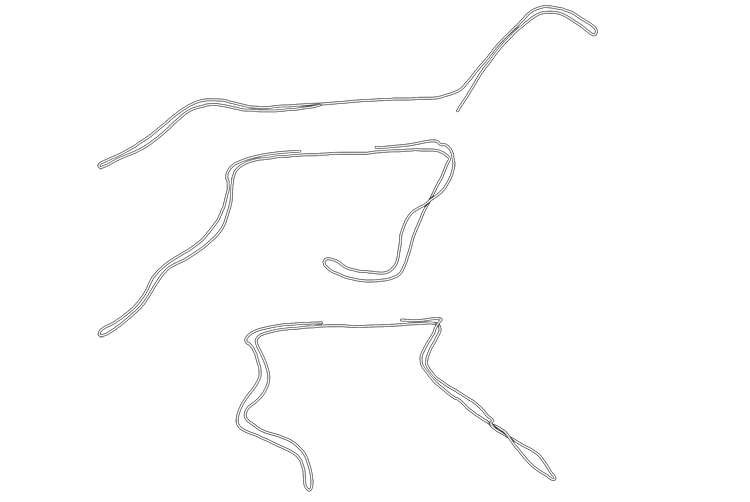
They may not make much sense at the minute, but you can now use more wire to bind the three elements together.

Now your armature is in the correct shape, place one nut onto the threaded rod, wire your armature to the rod above the nut, then tighten another nut above it to hold it in place.
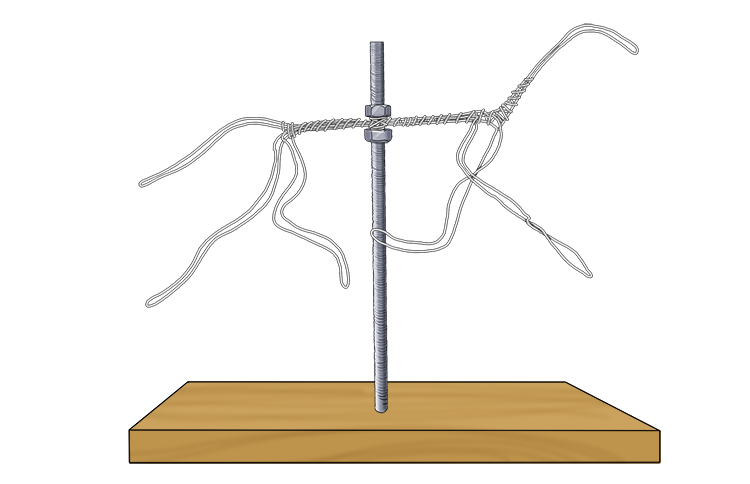
Your armature is now complete and the wires can be adjusted into your chosen position to support your clay.
You cannot 'fire' your clay and bake it with an armature in place, inside the body of the clay, because the clay will crack as the metal heats. However, you can leave an armature in place to form a cast in a mould to create a bronze statue, or scan the finished design into a computer for further 3D modelling in films or game programmes.
For a more technical armature tutorial, you can see in Mammoth Memory's Auguste Rodin Art Project how to create an armature using wood, sculpting wire and aluminium foil, for his sculpture The Thinker.




